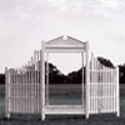|
CadavericSpasm posted:I'm renovating my house and we're getting ready to work on the basement. We ripped up the lovely old carpet and are in process of removing the disgusting foam/glue mixture that lurked beneath. As to my question, what type of floor covering should we go for? The basement floor is all concrete under the foam/glue and it's not really level. Would linoleum or peel-and-stick tiles be okay? Do I need a vapour barrier of some sort? I also have a large hole in the concrete because someone thought a sump pump was necessary when living at the top of a hill. Look up "levelcrete" -- good solution for leveling cement floors so you may then tile or whatever on a good surface. Fill the large whole with regular cement first. e: you may also need to pull and remount floor moulding and maybe even shave a bit of your doors using this method. Flay Minion fucked around with this message at 03:36 on Sep 22, 2010 |
|
|
|

|
| # ? May 10, 2024 02:11 |
|
Not sure if this is worth a thread of its own or not; if so I'll be happy to make one. My house has electric baseboard heaters, and for a variety of reasons we would like to upgrade. We don't have a gas hookup, and I'm not sure if there's even a gas line on my street, so we will probably stick with electric. I have read a little about ductless heat pump systems, and I was hoping someone might have some unbiased information about them. Most of what I've found has been pretty sales-pitchy. I have a very small house; 2/1, about 750-800 sqft. What's are the installation and recurring costs like for them? It is going to be prohibitively expensive to get registers or whatever they're called in every room?
|
|
|
|
stubblyhead posted:Not sure if this is worth a thread of its own or not; if so I'll be happy to make one. My house has electric baseboard heaters, and for a variety of reasons we would like to upgrade. We don't have a gas hookup, and I'm not sure if there's even a gas line on my street, so we will probably stick with electric. I have read a little about ductless heat pump systems, and I was hoping someone might have some unbiased information about them. Most of what I've found has been pretty sales-pitchy. I have a very small house; 2/1, about 750-800 sqft. What's are the installation and recurring costs like for them? It is going to be prohibitively expensive to get registers or whatever they're called in every room? Ductless means just that: no ducts. It's basically a window unit, except you don't put it in a window. Installation is basically: Drill holes in wall to outside for refrigerant lines. Hang indoor unit on wall, plug in refrigerant lines and power, connect power and refrigerant lines to outdoor unit, turn on, win. If you want cooling in another room, you put another split system there, or you open a door. Depending on where you live, heat pumps aren't a great idea. They stop working very well near 40F, and probably won't work at all at freezing.
|
|
|
|
babyeatingpsychopath posted:Ductless means just that: no ducts. It's basically a window unit, except you don't put it in a window. Installation is basically: Drill holes in wall to outside for refrigerant lines. Hang indoor unit on wall, plug in refrigerant lines and power, connect power and refrigerant lines to outdoor unit, turn on, win. If you want cooling in another room, you put another split system there, or you open a door. Depending on where you live, heat pumps aren't a great idea. They stop working very well near 40F, and probably won't work at all at freezing.
|
|
|
|
grover posted:Naw, heat pumps still work well below freezing. They lose efficiency when near the edge of their operating range in either heating or cooling mode, but have a very wide operational range. Generally, they'll run as a heat pump down to about -18C/0F [depends on the unit and if you have the right low-temp solenoids installed] at which point efficiency has dropped to that of electric strip heat and most ducted systems simply switch over to an electric strip heaters (which are super-cheap to install). Heat pumps are the way to go in temperate climates where both AC and heat are needed, and temps rarely dip below 0F. Yeah, I live in western Washington; we get a little bit of snow in the winters, but lows are generally in the 40s. I've done a little more reading, and it doesn't sound like a ductless system is the way to go for us. A traditional heat pump system might work though, so I guess we'll look further into that.
|
|
|
|
I've got an arts and crafts question. I'm working on my Dr. Horrible Halloween costume and I've got the goggles (these, specifically), but I need to make the flexible rubber part of the goggles metallic silver to go with my costume. A friend of mine has suggested gluing on this silvery fabric stuff she has, but i was wondering if there was maybe a special kind of paint that I could use instead, something that will adhere to rubber and bend without cracking. Also: wormil posted:Most dry cleaners will also do minor repairs. I had a zipper in my leather jacket repaired some years ago for a very small fee. 100 HOGS AGREE fucked around with this message at 14:54 on Sep 26, 2010 |
|
|
|
100 HOGS AGREE posted:I've got an arts and crafts question. I'm working on my Dr. Horrible Halloween costume and I've got the goggles (these, specifically), but I need to make the flexible rubber part of the goggles metallic silver to go with my costume.
|
|
|
|
I own a big cargo van and I want to do something to make it look less creepy. I was thinking of pasting over every painted surface with mirrorized mylar sheets, what they use to make survival/space blankets. I'd like to see if anyone else thinks I would be able to get the mylar to wrap fairly cleanly around curves and edges without appearing too wrinkled. I admit I've never handled it, is it crinkly or kind of rubbery? Of course I expect the attempt to have a do-it-yourself look to it, but if it's sure to just look totally crap I won't bother. On the other hand I feel like I'd be able to stretch and pull it a little bit, use some kind of roller to get it flat, and I feel clever about being able to cut angles out so it would look fine except up to close inspection. It sounds thin enough (sub-millimeter) that maybe even with folds it would still present a fairly mirrored surface. My first idea was to just use shiny side out tin foil. I found some google images of some guys who did it on a Volvo and it looked okay, but I had worries about choosing a glue that would even dry if sandwiched between metal. Any ideas?
|
|
|
|
We just moved into a new house with a very large yard, and the back yard is mole central. I've read that moles aren't really harmful to a yard, more a nuisance than anything else. I'm not totally opposed to sharing the space with them as we're not the "putting green" yard maintenance types, but I also don't want a corner of the house to sink because there are mole tunnels underneath it. Would that happen? Can I ignore the moles if I want to?
|
|
|
|
What are my options for long term wiring cataloging? The last person to do wiring in my house penciled in each breaker's role, so needless to say, its mostly illegible, and the paper diagram for the person before that has mostly disintegrated. I'd like to make a fairly comprehensive and detailed guide for the future inhabitants, including what breaker controls what, how each run is routed. What type of archival method works best? Laminated paper? I was considering getting a fire box and storing a folder of laminated papers detailing everything, and just leaving it in the cubby next to the breakers. I'm envisioning this as lasting in the several decades to half a century range.
|
|
|
|
Triikan posted:What are my options for long term wiring cataloging? The last person to do wiring in my house penciled in each breaker's role, so needless to say, its mostly illegible, and the paper diagram for the person before that has mostly disintegrated. I'd like to make a fairly comprehensive and detailed guide for the future inhabitants, including what breaker controls what, how each run is routed. What type of archival method works best? Laminated paper? I was considering getting a fire box and storing a folder of laminated papers detailing everything, and just leaving it in the cubby next to the breakers. I'm envisioning this as lasting in the several decades to half a century range. Get a printout of your plans on archival paper and put it in a frame behind glass. I've been in some electric rooms from the 20s and 30s that have their circuit diagrams and panel schedules this way and they're still very clear and legible, though the paper wasn't archival and has yellowed significantly.
|
|
|
|
Actual question. I have a Fridgidaire pld2850rdc0 dishwasher that just now started dumping water out of the bottom at the front of the door. Feeling around, it seems like the middle third of the sealing gasket is now gone. Where would it have gone? It's not in the trap. How do I get this stupid thing working for two days until I move out?
|
|
|
|
I'll shortly be renovating a poured concrete house :facepalm: Anyway, drilling some holes will be unavoidable, apart from using a masonry bit and a really good borrowed hammer drill, are there any tips? In addition, how does one patch/repair a flatroof? There's an edge lifted on one section and a corner has been cut off another section. If there's no rot underneath is it possible to patch the tar paper?
|
|
|
|
I'm finishing my basement and I am concerned about clearance for a door. I would like to have a bedroom door right underneath a vent/bulkhead and the requirement for a bedroom door is 30"x80" and the distance from unfinished concrete to the vent is 84.25". I am thinking that a subfloor+floor+bulkhead framing+drywall+door jamb may be more than 4". Should I give up on the idea and put the bedroom wall somewhere else that is not underneath a bulkhead?
|
|
|
|
Sounds doable. What finish floor are you planning? 1" furring, 1/2" finish floor, 80" door + 2" for frame and shims = 83.5" If this is a non load bearing application like it sounds like, you can frame the door against the vent framing instead of a header dwoloz fucked around with this message at 07:16 on Oct 5, 2010 |
|
|
|
babyeatingpsychopath posted:Actual question. I have a Fridgidaire pld2850rdc0 dishwasher that just now started dumping water out of the bottom at the front of the door. Get some liquid gasket in a tube at your local auto shop and make your own seal.
|
|
|
|
BONUS ROUND posted:Get some liquid gasket in a tube at your local auto shop and make your own seal. That stuff makes a mess and would probably tear apart the first time the door was opened. Some thin, soft stick-on weatherstriping might work in the shortterm, but I'm guessing it's not an issue anymore.
|
|
|
|
eddiewalker posted:That stuff makes a mess and would probably tear apart the first time the door was opened. Some thin, soft stick-on weatherstriping might work in the shortterm, but I'm guessing it's not an issue anymore. Moved out last week, with a box full of dirty dishes. The new place has an awesome dishwasher from the late 70s that was made from rocket motor fuel injectors and throws things around inside. It rules.
|
|
|
|
Why the hell couldn't you just handwash for a couple of days?
|
|
|
|
quadpus posted:Why the hell couldn't you just handwash for a couple of days? We aren't cavemen. (Does anyone else remember the thread a few years ago where the guy hooked up a dishwasher in the garage because they didn't have space or hookups in the kitchen? The entire family was toting dishes all the way across the house because they didn't consider handwashing sanitary.)
|
|
|
|
Is there any danger or drawback to using a couple cans of spray foam on the gap between my fascia board and roof sheathing? I have water coming in in bad weather, and there is not time or budget for new fascia and roofing before winter starts. This was supposed to be next years project, but an significant amount of water comes in as strong winds are predominantly from that side of my house.
|
|
|
|
I'm installing a switch in an extension cord. I've got a handy box mounted to the wall already, all the wiring is in, but my roommate told me that I need to dip the stranded wire into flux and heat it for it to be safe to attach to the switch screws (basically converting it into solid-core wire). Reading more on the web, I guess my new question is: is this okay? Everyone seems to believe that unless I have screw-clamp connectors on my switch (I don't, I have spring-clamp and regular screw connectors) that I should, at the very least, pigtail solid-core wire to my stranded before attaching it to the switch. What do you think, DIY? Shit Fuckasaurus fucked around with this message at 05:37 on Oct 10, 2010 |
|
|
|
mr.belowaverage posted:Is there any danger or drawback to using a couple cans of spray foam on the gap between my fascia board and roof sheathing?
|
|
|
|
Plastik posted:I'm installing a switch in an extension cord. I've got a handy box mounted to the wall already, all the wiring is in, but my roommate told me that I need to dip the stranded wire into flux and heat it for it to be safe to attach to the switch screws (basically converting it into solid-core wire). You should be fine with stranded wire. A trick is to strip the wire to the length you need, then put your strippers 1/8" past that, cut the insulation, then slide the newly-formed grommet to the end of the strands. This keeps all the strands together when you tighten the screw.
|
|
|
|
Plastik posted:I'm installing a switch in an extension cord. I've got a handy box mounted to the wall already, all the wiring is in, but my roommate told me that I need to dip the stranded wire into flux and heat it for it to be safe to attach to the switch screws (basically converting it into solid-core wire). Tinning the wire prevents that strands from fraying. Its not necessary but is nice for applications where the wire will be removed and re-installed. I do it for speaker wire.
|
|
|
|
dwoloz posted:Tinning the wire prevents that strands from fraying. Its not necessary but is nice for applications where the wire will be removed and re-installed. I do it for speaker wire. In the case of speakers, it's better to use banana plugs with binding posts, or pin connectors if you have small spring clips. You'll still avoid the possibility of a stray strand shorting, but get more surface area in contact than with a soldered nub. Plus, its nearly impossible to tighten a tinned wire into a binding post without it loosening over time. eddiewalker fucked around with this message at 00:50 on Oct 11, 2010 |
|
|
|
How bad is it vent a bathroom fan into the attic? I had some work done in my bathroom and the forgot to attach an outlet to the roof. It vents into my attic directly underneath a turbine ventilator, and there isn't any type of soft insulation to grow mold really, but I'm curious before I head up there and start cutting holes in my roof.
|
|
|
|
BorderPatrol posted:How bad is it vent a bathroom fan into the attic? Unless that's specified by your local building codes, I wouldn't worry about it. Lots of people just vent to their attics without issue.
|
|
|
|
BorderPatrol posted:there isn't any type of soft insulation to grow mold really Mold and mildew will grow on wood.
|
|
|
|
I have a pendant that I'd like to put on a necklace--problem is that it won't stay straight on the necklace, and flops to the side or whatever. What is the thing called that you hook the pendant to, then loop through the necklace, to keep it hanging down? Where can I buy one?
|
|
|
|
So I've decided that instead of buying (band)patches to sew/iron onto a jacket, It'd be alot cooler (and productive!) to actually embroider the logos into the jacket myself. I tried looking and couldn't find a thread dealing with embroidery, and my internet searches haven't helped much either...I am absolutely new to this whole thing, so I'd much appreciate if someone could point me in the right direction!
|
|
|
|
BorderPatrol posted:How bad is it vent a bathroom fan into the attic? I'm in the process of installing an exhaust fan in my bathroom as well and had that exact same question. The attic is ventilated, so why not, right? I had my roof reshingled last spring (and a vent installed) and asked the roofer why it was necessary. He told me that moisture will condense and drip, generally in the same places, which will ruin your ceilings over time. Might be bullshit, might not, but I figured I'd rather pay a few extra bucks to install a vent and do it right than pay a lot of extra bucks to replace my living room ceiling a few years down the road. The guy that did my roof is a buddy of mine and he didn't charge any extra to install the vent, so he wasn't just bullshitting me to make some extra money. My question about installing a vent is a little more on the electrical side. In my bathroom there is just a single switch for the light. The switch is installed before the light, so I have all the wires I need in the box to hook up a dual switch. The problem is that I can't get the wires from the fan into the box as well. The box is mounted to a stud with two nails, and is surrounded by tile, so removing it from the wall isn't an option unless I want to tear out some drywall and gently caress that. There appears to be a knockout plug at the top of the box, but I can't knock it out for anything. I can see "perforations" that look like () at the top of the box (exactly like a knockout plug), and I have been beating the hell out of it with a screwdriver and a hammer but can't knock it out at all. It doesn't even budge. The box does move a bit when I am pounding on it, so I am pretty sure there isn't a stud directly above the box that is preventing me from knocking the plug out. Has anybody ever seen an electrical box with psuedo-knockout plugs? I can't imagine why such a thing would exist, but that seems like exactly what I am dealing with. Either that, or the machine that punches the perfs for the plugs missed a beat on my particular box and just dented the metal a bit. Pushing the wire down from the attic and hitting a 3/4" hole in the box while swimming around in a three-foot deep pool of insulation is going to be another hurdle, but I'll cross that bridge when I come to it. Skunkduster fucked around with this message at 14:34 on Oct 11, 2010 |
|
|
|
Fatty Patty posted:I have a pendant that I'd like to put on a necklace--problem is that it won't stay straight on the necklace, and flops to the side or whatever. What is the thing called that you hook the pendant to, then loop through the necklace, to keep it hanging down? Where can I buy one?
|
|
|
|
That knockout isn't budging because you're hitting it from the wrong side. Box knockouts are designed to knock inwards, not out. If it's a steel box, then it could be designed poorly and have some type of cleat on the other side of that knockout to hold that box to the stud. It sounds like you do have a steel box. Does it have cable clamps? Unscrew the top one from the box and you should see knockouts you can pry out from the inside with just a screwdriver. As for pushing wire through that wall, you got a couple options, depending on how much room you have to work in the attic. If you have lots of room, then just use a standard drill bit to drill downwards. If you don't, then you may have to remove that box from the wall anyway (there are easier ways to do this) and use a flexible drill bit to drill upwards from that hole.
|
|
|
|
kid sinister posted:Unless that's specified by your local building codes, I wouldn't worry about it. Lots of people just vent to their attics without issue.
|
|
|
|
kid sinister posted:It sounds like you do have a steel box. Does it have cable clamps? Unscrew the top one from the box and you should see knockouts you can pry out from the inside with just a screwdriver. That is correct. There is a cable clamp at the top, and knockouts behind that clamp, but those are being used by the existing wires that go to the light. I need a third hole in that box and that knockout plug seems to be the only option. Looks like the next step is to get a chisel or a punch and a bigger hammer  kid sinister posted:As for pushing wire through that wall, you got a couple options, depending on how much room you have to work in the attic. If you have lots of room, then just use a standard drill bit to drill downwards. If you don't, then you may have to remove that box from the wall anyway (there are easier ways to do this) and use a flexible drill bit to drill upwards from that hole. The switch is on an interior wall, so I have plenty of space to work in the attic. I was just thinking it was going to be a bitch to blindly hit that 3/4" knockout plug in the box from 4 feet away.
|
|
|
|
For drilling 3/16" holes in concrete/brick, do I need to use a hammer drill or would a regular 18v cordless drill with a masonry bit suffice?
|
|
|
|
The cordless won't have the power.
|
|
|
|
Black Jasper posted:For drilling 3/16" holes in concrete/brick, do I need to use a hammer drill or would a regular 18v cordless drill with a masonry bit suffice? Shot in the dark, but are you drilling holes for those blue Tapcon screws? I had no trouble drilling into sidewalk concrete with a $30 corded drill and a masonry bit, but basement wall concrete took some patience and a few bits.
|
|
|
|

|
| # ? May 10, 2024 02:11 |
|
Ahz posted:The cordless won't have the power. Not on the first charge anyway..
|
|
|



























